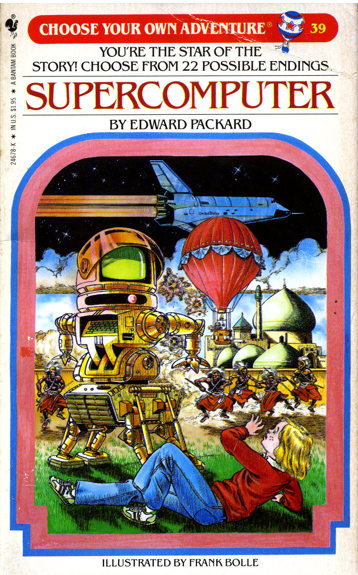Being a young kid in the ’80s, I remember reading a bunch of books from the “Choose Your Own Adventure” series. For anyone who doesn’t know what these books are, they are stories written in second person where, at key points in the plot, you pick what action you would like to take, and that changes the course of the story. Example: after an introduction to the story, the reader is given choices of how the story should progress. For instance:
If you decide to start back home, turn to page 4.
If you decide to wait, turn to page 5.
So what happens is that you can read the same book multiple times and always get a new story. There are over 100 books in this series and they’ve become one of the best selling book series in history.
For the last several years, I have believed that there are a lot of similarities between these books and the function of research. Why? You can give a researcher a search assignment (one of the books), and depending on what path that researcher chooses to follow (which storyline is chosen), they will get different results (different endings to the book). Go back and do the search again (re-read the book) and choose to follow a different source lead (pick a different storyline), and you will end up with a completely different result (brand new story ending!).
Also – giving five researchers the same assignment will result in five different search results. It just depends on their techniques, resources, and thought processes while conducting the search. If five different people were to read the same Choose Your Own Adventure book, they would each take five different paths and have five different adventures! It really just depends on the individuals preferences….search techniques, resources available, thought process, experience; they all play into which path a researcher will choose when conducting a search.
Want to know if you have a really good researcher on your hands? Ask them if they’ve ever read Choose Your Own Adventure books. Then — ask how they read the books. A small handful of people will tell you that they read them in reverse — they looked for the story ending they wanted and read the books “backward” to figure out the best path to take to reach that desired result. Translate that into a search assignment: the best story ending equals a quality candidate, and reading the book in reverse equals reverse engineering the search process to find the best methods, the most effective resources, and the overall most efficient approach to the search assignment to find that quality candidate.
How many of you have read Choose Your Own Adventure books? How did you read them? Do you use a similar approach to your search assignments? Share your thoughts in the comments below.
